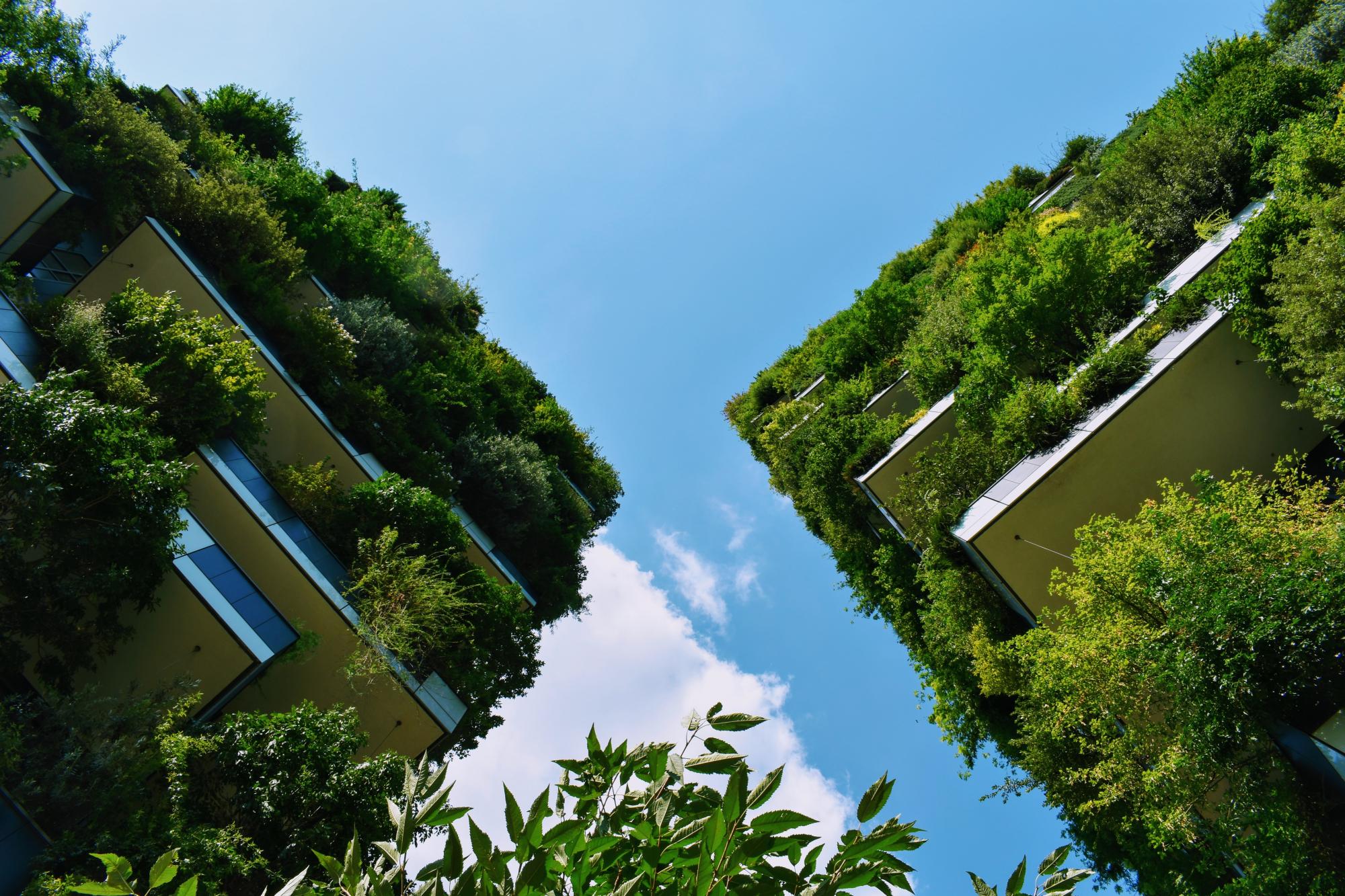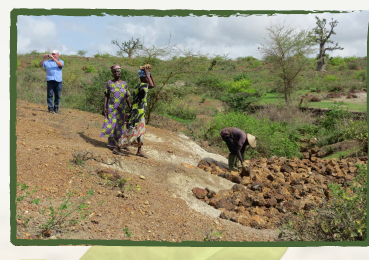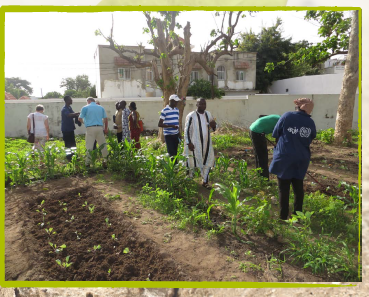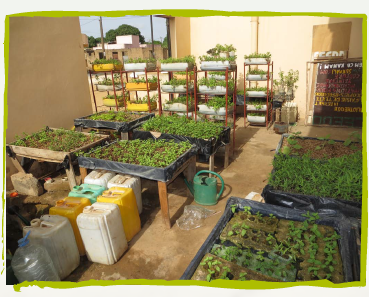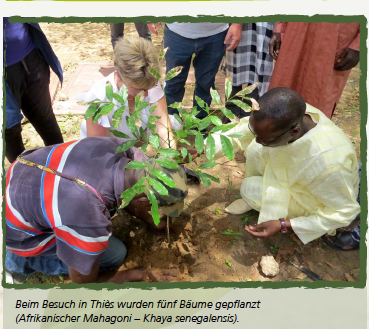Senegal, like many other West African countries, is in an unprecedented position when it comes to the threats climate change poses. Climate scientists predict that the country will likely experience increased temperatures, decreased annual rainfalls, a rise in sea levels, and an increased frequency of heavy rainfall events. Automatically these events will change drastically the social and economic structures of the country and are reasons for concern for the people of Senegal and their government. For example, the city of Thiès is in an area where environmental degradation is very advanced. The tree cover is in a situation of extreme fragility due to tree ageing or abusive tree cutting. To address many of these concerns, the city of Thies is trying to become sustainable through the development of green spaces that are expected to restore the city's ecological dimension and contribute to the reduction of greenhouse gases and the improvement of the living environment. (1,2)
Overview
Nature-based solution
- Parks and urban forests
- Pocket parks/neighbourhood green spaces
- Community gardens and allotments
- Allotments
- Horticulture
- Green areas for water management
- Other
Key challenges
- Climate action for adaptation, resilience and mitigation (SDG 13)
- Climate change adaptation
- Climate change mitigation
- Water management (SDG 6)
- Flood protection
- Green space, habitats and biodiversity (SDG 15)
- Habitat and biodiversity restoration
- Green space creation and/or management
- Environmental quality
- Soil quality improvement
- Air quality improvement
- Inclusive and effective governance (SDG 16)
- Inclusive governance
- Social justice, cohesion and equity (SDG 10)
- Environmental education
Focus
Project objectives
Implementation activities
Climate-focused activities
Climate change adaptation:
- Implement solutions to capture/store water to increase its availability and prevent shortages from droughts
- Increase or improve urban vegetation cover to help reduce outdoor temperature
Climate change mitigation:
- Increase green urban nature for carbon storage (wetlands, tree cover)
- Sustainable agriculture practices to reduce energy use or carbon emissions
- Raise public awareness of behaviours, lifestyle and cultural changes with mitigation potential
Biodiversity conservation or restoration-focused activities
Biodiversity restoration:
- Rehabilitate and restore damaged or destroyed ecosystems
- Restore species (native, endangered, or unspecified)
- Public engagement
Main beneficiaries
- Local government/Municipality
- Citizens or community groups
- Marginalized groups: Socio-economically disadvantaged populations (e.g. low-income households, unemployed)
- Food producers and cultivators (i.e. farmers, gardeners)
- Young people and children
Governance
Management set-up
- Government-led
Type of initiating organisation
- Local government/municipality
- Transnational network
Participatory approaches/ community involvement
- Co-planning (e.g. stakeholder workshops, focus groups, participatory mapping)
- Dissemination of information and education
- Consultation (e.g. workshop, surveys, community meetings, town halls)
- Joint implementation (e.g. tree planting)
Details on the roles of the organisations involved in the project
Project implemented in response to ...
Financing
Total cost
Source(s) of funding
- Public local authority budget
- Other
Type of funding
- Earmarked public budget
- Direct funding (grants, subsidies, or self-financed projects by private entities)
Non-financial contribution
- Provision of land
- Provision of labour
- Provision of expertise
- Public authorities (e.g. land, utility services)
- Citizens (e.g. volunteering)
Impacts and Monitoring
Environmental impacts
- Climate change
- Enhanced carbon sequestration
- Environmental quality
- Improved air quality
- Water management and blue areas
- Increased protection against flooding
- Improved stormwater management
- Green space and habitat
- Increased green space area
- Increased conversion of degraded land or soil
- Increased number of species present
Economic impacts
- Unknown
Socio-cultural impacts
- Social justice and cohesion
- Improved liveability
- Increased access to healthy/affordable food
- Education
- Increased support for education and scientific research
- Increased knowledge of locals about local nature
Type of reported impacts
Presence of formal monitoring system
Presence of indicators used in reporting
Presence of monitoring/ evaluation reports
Availability of a web-based monitoring tool
References
2. Engagement Global (no date), Restauration et réhabilitation des écosystèmes dans la ville de Thiès, available at Source link (accessed 10-11-2021)
3. Seneplus (2016), TALLA SYLLA LANCE LE PROJET RESTAURATION ET REHABILITATION DES ECOSYSTEMES DE LA VILLE DE THIES, available at Source link (accessed 10-11-2021)
4. Thies-Solingen cooperation website (no date), Nachhaltiger Klimaschutz in Afrika, available at Source link (accessed 10-11-2021)
5. Thies-Solingen cooperation website (no date), RAPPORT D’ACTIVITES - Du 1er octobre au 31 décembre 2016, available at Source link (accessed 10-11-2021, also attached)
6. Climate Links (no date), Climate Change Adaptation in SENEGAL, available at Source link (accessed 10-11-2021)
7. Thies-Solingen cooperation website (no date), Städtefreundschaft zwischen Solingen und Thiès im Senegal, available at Source link (accessed 10-11-2021, also attached)
